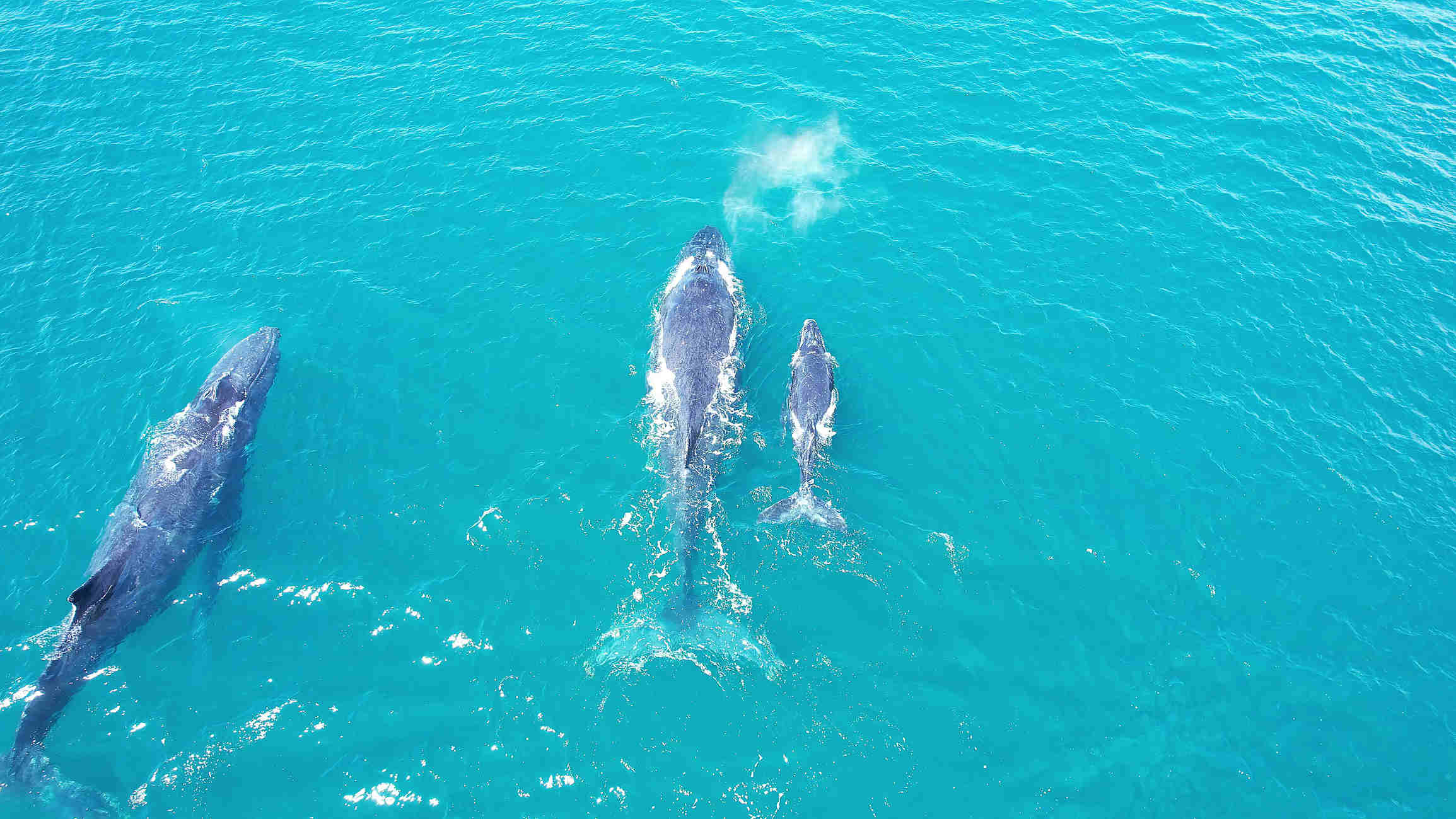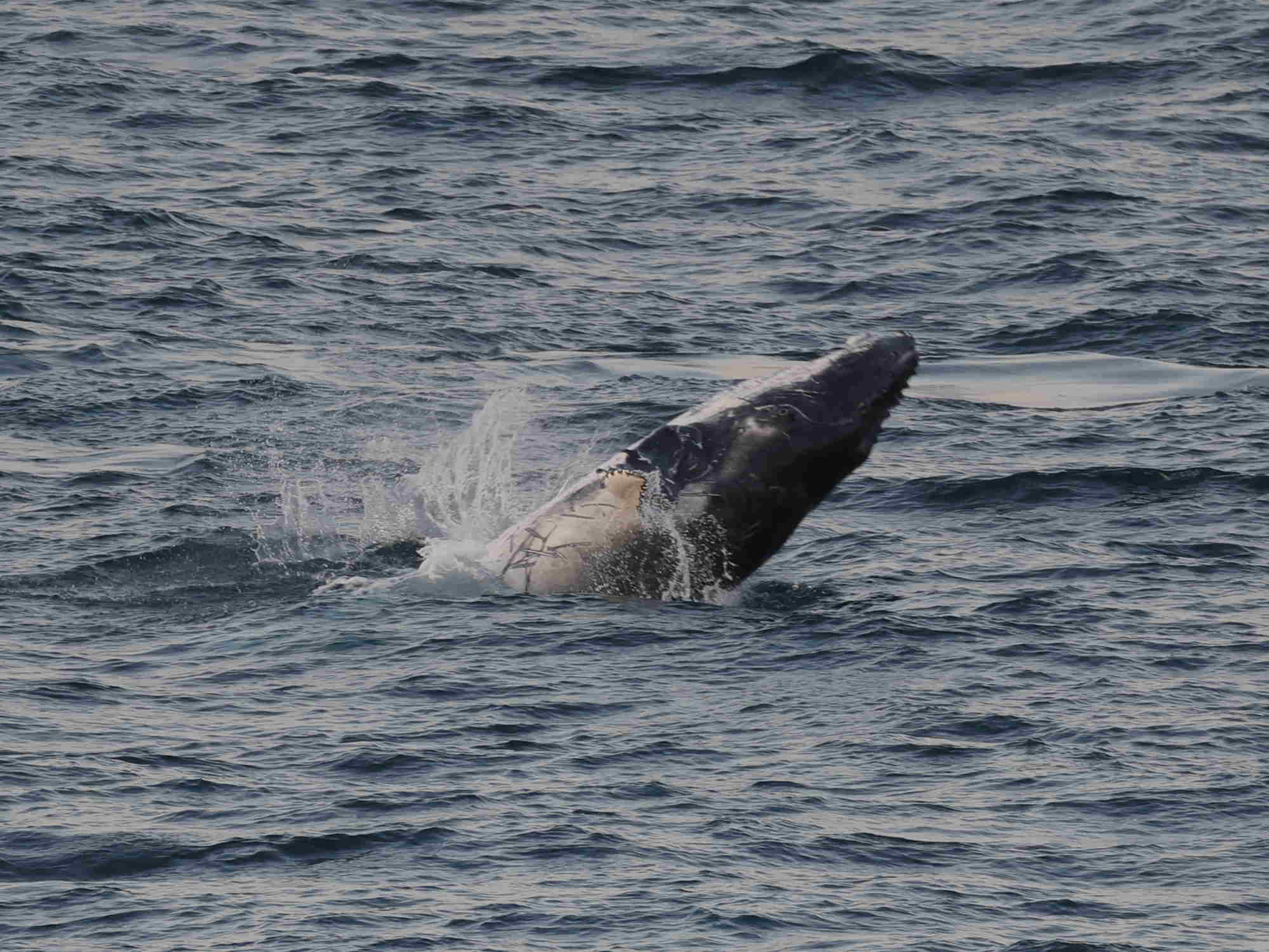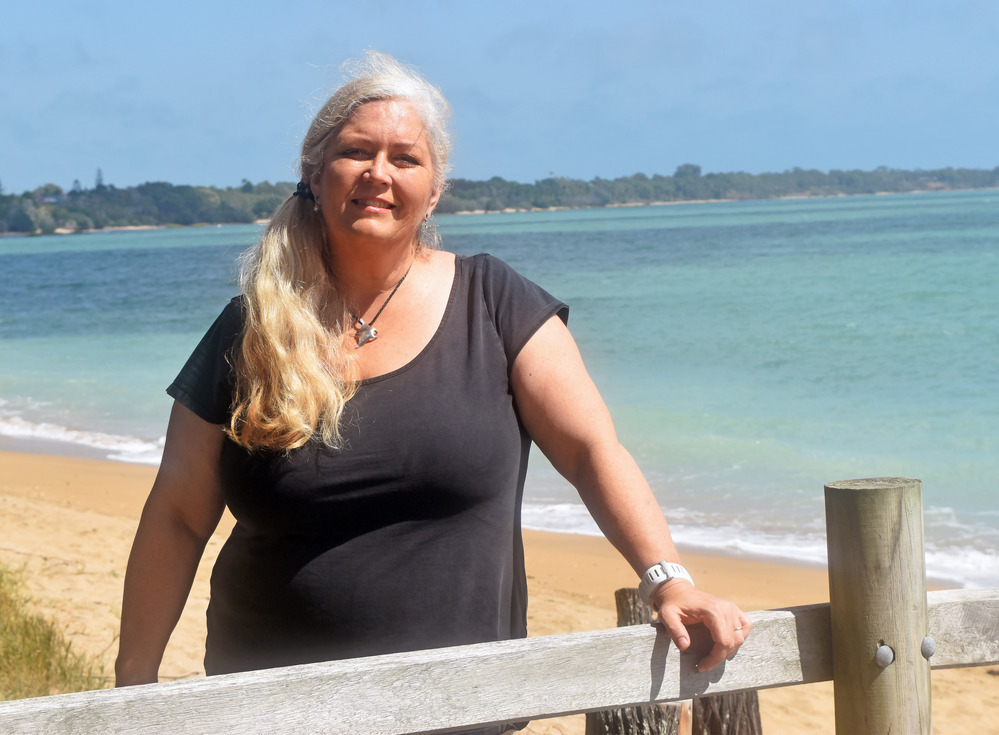Striking photos have revealed the impact of boat propellers on whales, as the ocean giants face increased risks on their annual migration.
Moffat Beach photographer Damien Lange captured the images of a male, a female, and their calf, heading south for the summer after the breeding season – all three with obvious injuries.
He was stunned to see gashes on each of them, especially on the big male.
“I’ve been filming them for the last month, and I’ve noticed that they have lots of marks/scars on their backs, where it looks like they have been hit by a boat propeller,” Mr Lange said.

“The baby has probably only come from Hervey Bay… And the male’s back had very distinctive cuts.

“I don’t know if it’s from a shark net or whether they’ve been attacked by a shark.”
Damien usually takes surfing and nature photos but decided to start taking footage and photos of whales via a drone this season.
“There are quite a few whales out there, about a kilometre offshore,” he said.
“It’s incredible to see them. They’re interactive.
“There was one baby that turned around and looked straight at the drone, and I swear she looked into my soul.

“Some of them are playful and some are just sublime sitting under the surface.
“If they’re under the surface and a boat goes over, the driver would have no idea they’re there.”
Scroll down to see Damien’s footage of the pod of whales
Another local, Jeff Addison, also took some photos of injured whales, including this one below, which shows scars and scratches on its underside.

University of the Sunshine Coast marine expert, Associate Professor Kathy Townsend, said the marks on the big male in the pod, seen in the main image at top, were caused by a boat.
“That’s a propeller strike,” she said. “It has healed though.
“I know there is one whale called Bladerunner that has markings like that, but I can’t be sure if that’s the same individual.

“The marks are caused by a boat propeller driving over the back of the whale.
“It was probably asleep when it happened.”
She said incidents like this were becoming more common.
“It is an increasing risk, as the whale numbers and boat numbers have increased over the last few decades,” she said.
The Eastern Australian humpback population has reportedly increased by about 10 per cent each year and its close to its pre-hunting estimates of about 40,000.
Between September and October, humpbacks travel south along the east coast of Australia.
They’ve been thrilling crowds of people on the Sunshine Coast this season, with several close encounters with locals.
Safe distancing rules are in place to prevent boats from getting too close to whales, dolphins and other marine animals. A $718 fine and other penalties may apply if these distances are breached.
For information about safe distances for boaties, fishers and jet ski-users, visit the Department of Environment and Science information page.
SUBSCRIBE here now for our FREE news feed, direct to your inbox daily!





